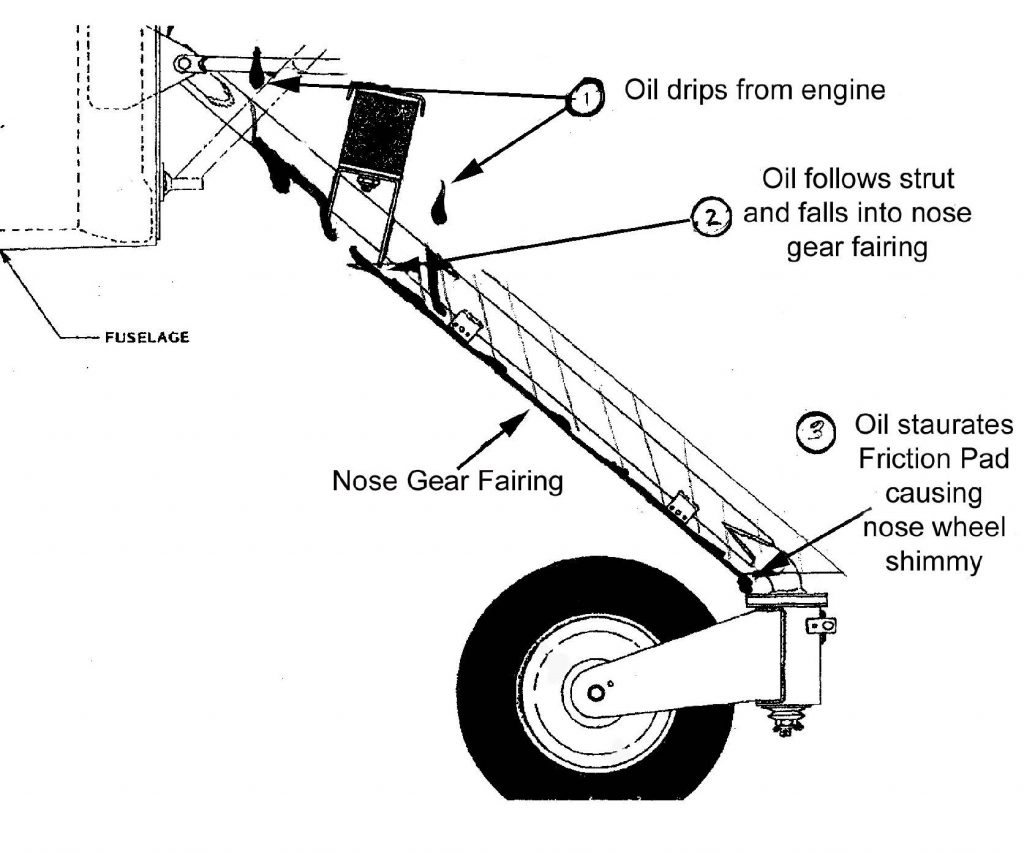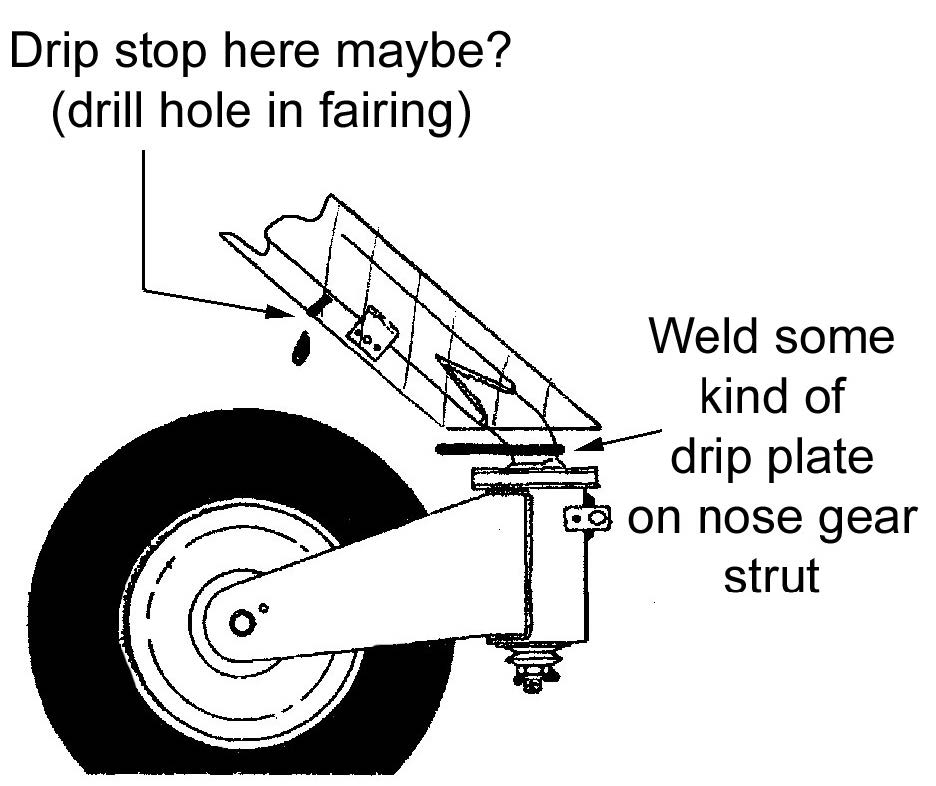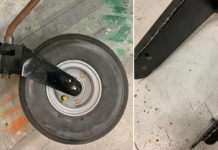Submitted by Mike Palmer, Phoenix, Arizona
We have a Glasair FT with 900+ hours now. We try to keep the engine compartment clean (that is, no oil) but after a recent engine over- haul our engine trickled a little oil for a while (about 40 hours) due to some stupidity on my part. I tried to keep the engine clean by regularly hosing it down with solvent until I found the problem.

Despite this, we had a severe case of nose wheel shimmy last week. The problem was a lack of friction at the nose gear caused by an oil soaked wear pad. This was caused by engine oil trickling down the back side of the nose gear fairing where it funneled directly on to the wear pad on the nose gear. (The order of events is enumerated 1,2 and 3 in figure 1). The top of the nose gear fairing makes a natural funnel, collecting engine oil drips and directing them down the nose gear assembly.
I have not worked out a solution yet, but maybe you guys can think of something. My first thought was that a “drip plate” could be welded to the strut just above the wear pad to help keep the friction pad free of oil and dry. (See figure 2). The only thing to be careful about is that there is a stop bolt that has to be installed right where the drip plate would get in the way. Another idea would be to make some sort of drip stop in the nose gear fairing itself so that the oil that runs down the fairing could exit well before it gets to the wear pad.





Hi,
I do really appreciate this info since I have a Glasair II FT. I really don’t want any oil to drip down on the friction pad. Something to really keep an eye on and the importance to keep the engine compartment dry of course. But it can easily happen during a change of oil or when you add some oil to the engine.